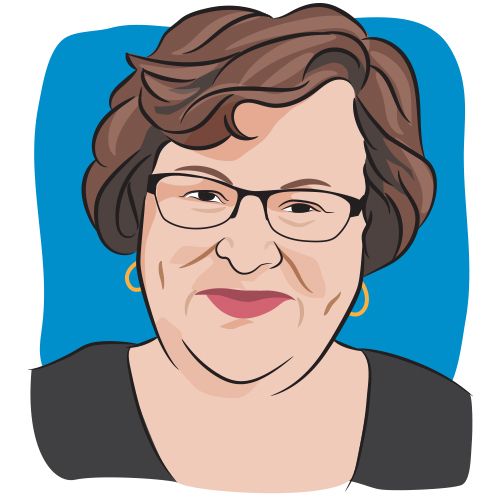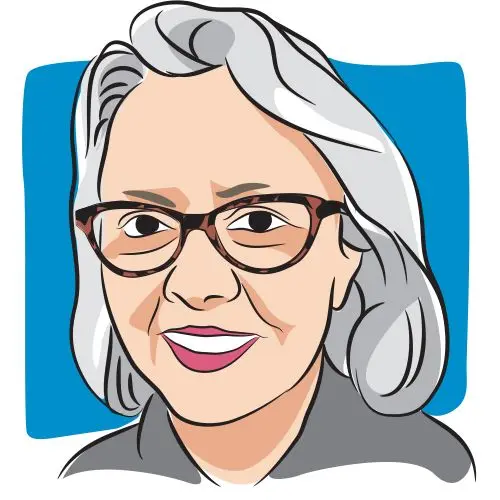Article
Overcoming Immune Exhaustion and Improving Lymphoma Outcomes
Author(s):
"One of the big challenges in lymphoma is that many immune cells are present right in the tumor, but somehow those immune cells are not actually killing the tumor cells," explained Stephen M. Ansell, M.D., Ph.D.
One of the main difficulties regarding immunotherapy in lymphoma is the exhaustion of immune cells. However, researchers are not too far from overcoming this, and some strategies have already begun to produce promising results, according to Stephen M. Ansell, M.D., Ph.D.
Ansell, who is chair of the lymphoma group at the Mayo Clinic in Rochester, Minnesota, recently talked with OncLive, a sister publication of CURE, about the use of immunotherapy in lymphoma. He covered the basics of how PD-1 inhibitors work to exciting trials that patients should be aware of.
CURE: Can you give an overview of immunotherapy in lymphoma?
Dr. Ansell: One of the big challenges in lymphoma is that many immune cells are present right in the tumor, but somehow those immune cells are not actually killing the tumor cells. So, the key question is how do the tumor cells hide from the immune system as efficiently as they do? Actually, there are many barriers to the immune response in lymphoma — everything from the cells that are actually pretty exhausted and worn out from being persistently activated. And sometimes there are other cells in the neighborhood that are actually suppressing their activity. Also, there are many proteins that are being made, either on the tumor cell, an immune-suppressive ligand, or proteins including cytokines which activate the immune system but then bring on exhaustion of the immune system over time.
With all of that going on, macrophages that are also immune suppressive and present in the tumor, that's the real challenge: To work out how to get the T cells that's trying to kill the tumor cell to be able to do that efficiently. There are a lot of strategies that are trying to test that now.
Can you discuss some of those strategies?
One of the real successful strategies has been to prevent T cell exhaustion. T cells basically get activated, they make proteins such as PD-1 as a receptor on the cell surface, and that then makes them at risk for being suppressed if the ligand PD-L1 or PD-L2 signals through PD-1. But actually, other receptors are important, like TIM-3 and LAG-3, and those begin to increase as the cell becomes more exhausted.
Strategies to keep the immune system engaged are to block these negative signals, blocking PD-1 has been very successful in lymphoma, but now also new trials blocking TIM-3 and LAG-3 are all in progress right now. So that's one strategy.
A second strategy that's ready and proving to be pretty interesting is actually taking the macrophages, which are influencing the immune system in an unfavorable way, and getting them to turn on the tumor. One of the ways to do that is that the tumor puts a little protein on the cell's surface called the "don't-eat-me" signal. So, the cell is ready just telling the immune system that it's on their side. But if you cover that up, then the immune system, particularly the macrophages, will provide a lot more scrutiny of that cell. That's another strategy that's proving very exciting and very promising at this point.
Looking at the big picture, if these strategies are implemented, what kind of impact will they have on patients with lymphoma?
I think right now the impact has been pretty profound. In Hodgkin lymphoma, blocking PD-1 has proved to be a significant success. Blocking PD-1 in patients who have had all treatments including transplant or Adcetris (brentuximab vedotin), showed at least 65 to 70 percent of patients responded to PD-1 blockade. That's now being used earlier in the disease course. In fact, it's even being combined with chemotherapy in the frontline. It's being shown that even if you use it before the chemotherapy, there is a higher response rate even as a single agent. These are all ways now where this is becoming a reality and actually benefitting patients directly.
What advice would you give to someone who is navigating this landscape?
The exciting part is that there are a lot of clinical trials in progress right now. I really encourage clinicians and patients to participate in trials, because that gives us answers that can then impact practice down the road.
Many clinicians are very familiar with PD-1 blockade, they're using it across a broad spectrum of different diseases, including solid tumors, so those are agents that they are familiar with. But I think the exciting part is the combination approaches, and I think that's where the trials are in progress.
Are there any trials in particular that you're excited about?
We're really trying to understand the role of PD-1 blockade compared to antibody drug conjugate, so there are trials now in the relapsed setting where patients are being randomized between those two types of treatment. That's a very appropriate trial for patients to be considered for.
There are a number of trials now utilizing upfront therapy, and in fact there are cooperative group trials that are soon going to be available where looking at standard treatment compared to these new combinations in the frontline is going to be a good approach.
I think the other thing is that elderly patients don't tolerate chemotherapy well, so using the antibody drug conjugate Adcetris and treatments such as PD-1 blockade in combination for Hodgkin lymphoma, for example, has been quite promising in older patients for whom chemotherapy is a challenge. These are places where there are lots of opportunity for patients.
What is your grand takeaway on the subject?
The immune system, when it works, does a very good job. So, we just need to get the immune system to work well every time, and target tumors in a much more efficient fashion. The exciting part is that there are lots of treatments that are in development right now that are trying to do that, so I think it's one of those spaces to keep your eye on, which hopefully will result in good outcomes for patients.




